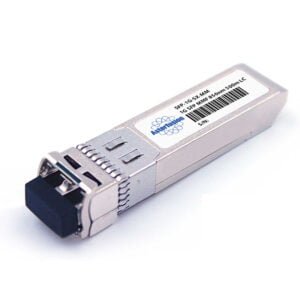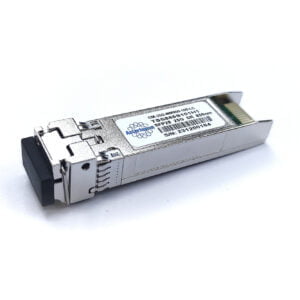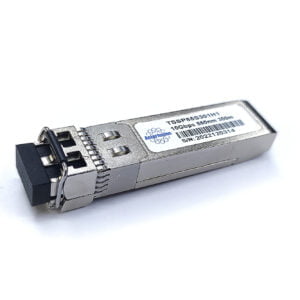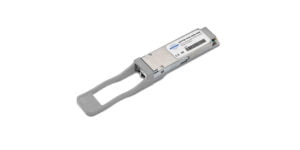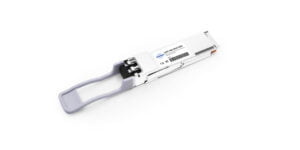The Most Complete Overview of Multimode Fibres -OM1, OM2, OM3, OM4 & OM5
written by Asterfuison
Multimode optical fiber is the preferred choice for optical fiber communication systems due to its affordability and suitability for short-distance transmission. It finds extensive usage in campus networks, enterprise LANs, and data centers. In the market, there are five types of multimode optical fibers available: OM1, OM2, OM3, OM4, and OM5. These variants offer different data transmission capabilities. With such a variety of options, you may wonder how to select the most suitable multimode optical fiber. This article will provide you with the necessary information to make a well-informed decision.
What is multimode fibre?
What is multimode fibre?
To understand multimode fiber, let’s first define optical fiber. It is a thin and flexible wire made of glass or plastic that can transmit light signals. This technology utilizes the principle of total reflection to transmit information through the optical fibers.
Multimode fiber is specifically designed to support multiple transmission modes at a given operating wavelength. Its purpose is to enable the dispersion of light over short distances. This type of fiber is commonly used in local area networks (LANs), data centers, and other applications requiring short-range communication.
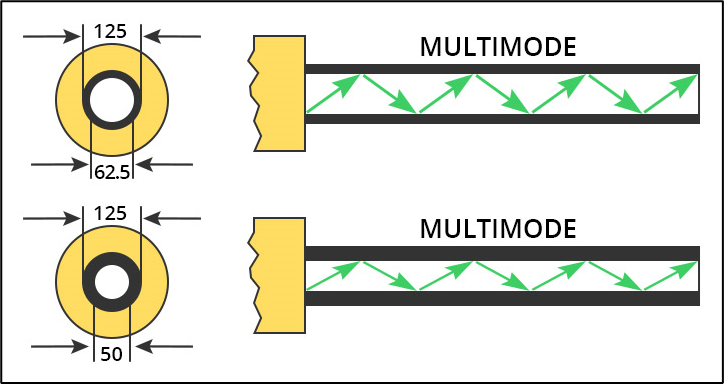
Features and advantages of multimode fiber:
Multimode fiber possesses various characteristics that render it suitable for short-distance communication applications. Firstly, it boasts a larger core diameter, which facilitates the transmission of a greater amount of light through the fiber. Consequently, this leads to enhanced data rates and increased availability of bandwidth in comparison to single-mode threading. Secondly, multimode fiber is more flexible and easier to install than other types of fiber, making it a widely favored option for local area networks. Lastly, it is relatively inexpensive compared to alternative fiber types, making it an ideal choice for cost-sensitive applications.
What is the difference between multimode fiber and single-mode fiber?
The difference between multimode fiber and single-mode fiber lies in several aspects. First, their core diameters are distinct, with multimode fiber having a larger core diameter (usually 50/62.5μm) and the capability to transmit multiple modes of light, while single-mode fiber has a notably smaller core diameter (usually 9 μm) and can solely transmit one light mode. Additionally, the bandwidth of single-mode fiber tends to surpass that of multimode fiber, reaching levels as high as 100,000GHz. Moreover, multimode fiber is suitable for short-distance applications, typically with a transmission distance of up to 550m. Finally, in terms of cost, multimode fiber tends to be less expensive compared to single-mode fiber.
How multimode fiber works:
Regarding the functioning of multimode fiber, it operates by permitting the passage of multiple light modes concurrently. This is achieved through the utilization of a larger core diameter, which minimizes the potential for signal attenuation and distortion. As a signal traverses through multimode fiber, it undergoes reflection and bounces amidst different light modes, ensuring transmission across a wider area. Consequently, this leads to a decrease in optical density in the fiber, ultimately mitigating signal distortion.
Classification: OM1, OM2, OM3, OM4 and OM5 multimode fibres
According to ISO 11810 standard, it supports multiple optical mode propagation, and multimode fibre is divided into OM1, OM2, OM3, OM4 and OM5 fibre.
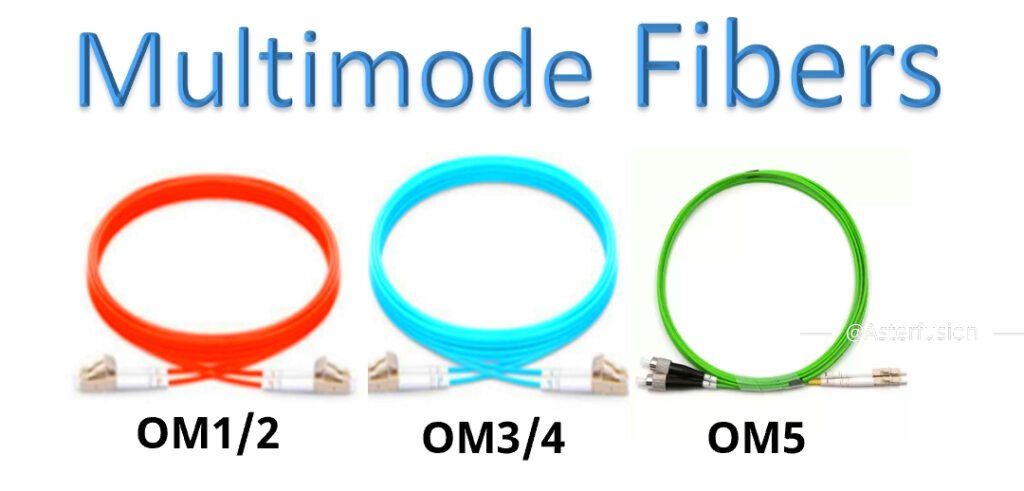
Understanding OM1 fibre
What is OM1 fiber and its feature
The OM1 optical fiber is a type of multi-mode optical fiber that operates in the 850/1300nm window and has a bandwidth of 200/500MHz.km or above. It utilizes an LED light source, has a core diameter of 62.5μm, and is typically orange in color. OM1 optical fiber can comply with the IEEE 802.3 Ethernet transmission standard. However, its relatively large core diameter restricts its bandwidth and transmission rate, making it less suitable for high-speed data transmission scenarios. Nevertheless, in certain applications, particularly those with cost considerations, OM1 may still be a viable choice. This optical fiber is mainly designed to support 100M Ethernet applications and can facilitate transmission distances of up to 33 meters in 10Gb Ethernet setups. The standard bandwidth of OM1 optical fiber is 200MHz*km.
OM1 Application Scenarios:
- Local Area Network (LAN): OM1 multimode fiber is widely employed in corporate and organizational LANs, as it offers a cost-effective solution with satisfactory performance. It serves the purpose of connecting a variety of devices and servers.
- Fiber-to-the-Desk (FTTD): OM1 fiber is commonly deployed for FTTD implementations, bringing fiber connectivity into offices or work areas to enable high-bandwidth connections.
Understanding OM2 fibre
What is OM2 fibre and its feature
OM2 fibre, also known as 850/1300nm window full injection of multimode fibre, encompasses a bandwidth of 500/500MHz.km or more. It utilizes an LED light source, features a core diameter of 50μm, and is typically encased in an orange outer jacket. Its capabilities allow for Ethernet speeds reaching up to 10Gbps, making it a prevalent choice for Gigabit Ethernet connections.
Compared to its predecessor, OM1, OM2 fibre exhibits an improvement in core diameter, with it measuring at 50 μm. This enhancement effectively minimizes modal dispersion within the multimode fibre, thus boosting its overall bandwidth. Such characteristics render OM2 fibre ideal for short-distance transmissions that necessitate higher bandwidth.
OM2 Application Scenarios:
- Enterprise Networks: Within an enterprise, OM2 fibre finds widespread usage in linking data centres, servers, and other network equipment. Its ability to provide heightened bandwidth support makes it an invaluable asset in this context.
- Campus Networks: OM2 fibre’s high bandwidth traits make it a favored choice in campus networks, which contend with substantial volumes of data traffic.
Understanding OM3 fibre
What is OM3 fibre and its feature
Shifting the focus to OM3 fibre, it is a laser-optimized multimode fiber that employs an 850nm VCSEL laser light source. With a core diameter of 50μm and an aqua-blue outer jacket, it is primarily utilized for Ethernet connections up to 100Gbps and is most commonly deployed in 10Gbps Ethernet scenarios. Representing a significant upgrade in multimode fiber standards, OM3 fiber caters to the growing demand for higher speeds and greater bandwidth. It offers superior transmission rates and bandwidth compared to OM1 and OM2 fibers, leading to its alternative names such as Optimized Multimode Fiber or 10 Gigabit Multimode Fiber.
OM3 Application Scenarios
- Data centres: OM3 multimode fibre performs well in high-density environments connecting servers, storage devices and network equipment, supporting high-speed data transmission.
- High-performance computing: Used to connect supercomputers, large-scale data processing clusters and other scenarios that require high-performance computing.
Understanding OM4 fibre
What is OM4 fibre and its feature
OM4 optical fiber, which is an upgraded version of OM3 multi-mode optical fiber with superior performance, boasts a core diameter of 50μm and utilizes an 850nm VCSEL laser light source. The outer sheath of the OM4 fiber is distinguished by its aqua blue color. In Ethernet applications exceeding 10Gbps, OM4 optical fiber surpasses OM3 optical fiber in terms of transmission distance, reaching up to 400 meters. One standout characteristic of OM4 fiber is its high bandwidth capability. This optical cable can support data transmission with a bandwidth of 4700 MHz*km, nearly double that of OM3 optical fiber.
OM4 Application Scenarios
- In the realm of large-scale data centers, OM4 multimode fiber plays a pivotal role by facilitating high-density connectivity between numerous servers and network equipment.
- Additionally, due to its exceptional bandwidth and density, OM4 fiber is extensively employed in applications supporting cloud computing and virtualization technologies.
Understanding OM5 fibre
What is OM5 fibre and its feature
OM5 optical fiber is the latest multi-mode optical fiber for high-speed data transmission. It is compatible with OM4 optical fiber and has the same core diameter of 50μm. The outer sheath of OM5 is distinctively light green. This fiber type is designed to support Wavelength Division Multiplexing (WDM), allowing multiple wavelengths to be transmitted on the same fiber, thereby increasing the total bandwidth. OM5 is particularly suitable for future large-scale data centers and high-performance computing applications.
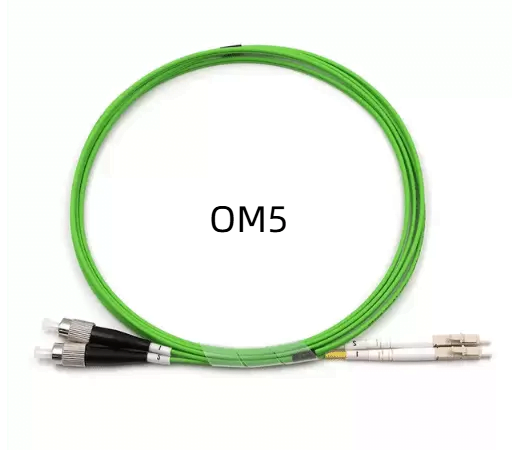
Compared to other multi-mode fibers, OM5 offers a wider wavelength range of 850nm to 953nm and provides increased bandwidth over longer distances. It can support various applications such as Ethernet, Fibre Channel, and InfiniBand. Thanks to its superior bandwidth capabilities, OM5 fiber enables data transfer speeds of up to 100 Gbps or even 400 Gbps in duplex mode.
OM5 Application Scenarios
- Large-scale cloud service providers: The WDM characteristics of OM5 multimode fiber make it highly suitable for establishing connections between data centers of large-scale cloud service providers, effectively meeting the escalating demands for data.
- 5G base stations: Providing outstanding performance in base station connectivity for 5G communications, the high bandwidth and WDM characteristics of OM5 fiber prove to be invaluable.
Comparison of OM1, OM2, OM3, OM4 and OM5
| Comparison item | OM1 | OM2 | OM3 | OM4 | OM5 |
| Core diameter (microns) | 62.5 | 50 | 50 | 50 | 50 |
| Wavelength (nm) | 850 | 850 | 850 | 850 | 850 – 953 |
| Outer sheath color | Orange | Orange | Aqua blue | Aqua blue | Light green |
| light source | LED | LED | VSCEL | VSCEL | VSCEL |
| Bandwidth (MHz·km) | 200 | 500 | 2000 | 4700 | 28000 |
| Transfer rate (Gbit/s) | 1-10 | 1-10 | 10-100 | 10-100 | 40-100 |
| Fast Ethernet max transmission distance/M | 2000 | 2000 | 2000 | 2000 | / |
| 1G Ethernet max transmission distance/M | 275 | 550 | / | / | / |
| 10G Ethernet max transmission distance/M | 33 | 82 | 300 | 550 | 550 |
| 40G Ethernet max transmission distance/M | / | / | 100 | 150 | 150 |
| 100G Ethernet max transmission distance/M | / | / | 70 | 150 | 150 |
| Wavelength division multiplexing support/M | No | No | No | No | Yes |
How to choose the right multimode fibre
Distance
One important aspect to consider when selecting the appropriate multimode fiber type is the distance that the signal needs to travel. Multimode fiber is available in different lengths, ranging from 220m to 550m. Opting for the right fiber type helps prevent signal loss and interference issues, which can have a negative impact on network performance. For shorter distances and lower data rates, it is advisable to choose OM1 (62.5 µm) fiber. On the other hand, for longer distances up to 500 meters, OM3 (50 µm) fiber is recommended due to its superior bandwidth.
Data rate
In addition, data rate is another crucial aspect when determining the most suitable multimode fiber type. The higher the data rate, the more bandwidth is required to avoid signal distortion and loss. OM3 (50 µm) multimode fiber allows transmission up to 300 Gbps over a distance of 10 meters, while OM4 (50 µm) fiber can transmit up to 150 Gbps over a distance of 100 meters.
Connector type
Considering the connector type is vital when making a choice for multimode fiber. Multiple connectors are available, such as LC, SC, ST, and MPO. However, choosing the appropriate connector type is crucial to ensure compatibility with the network equipment and devices that will be utilized. Both LC and SC are popular multimode fiber optic connector types due to their compact design and compatibility with most network equipment.
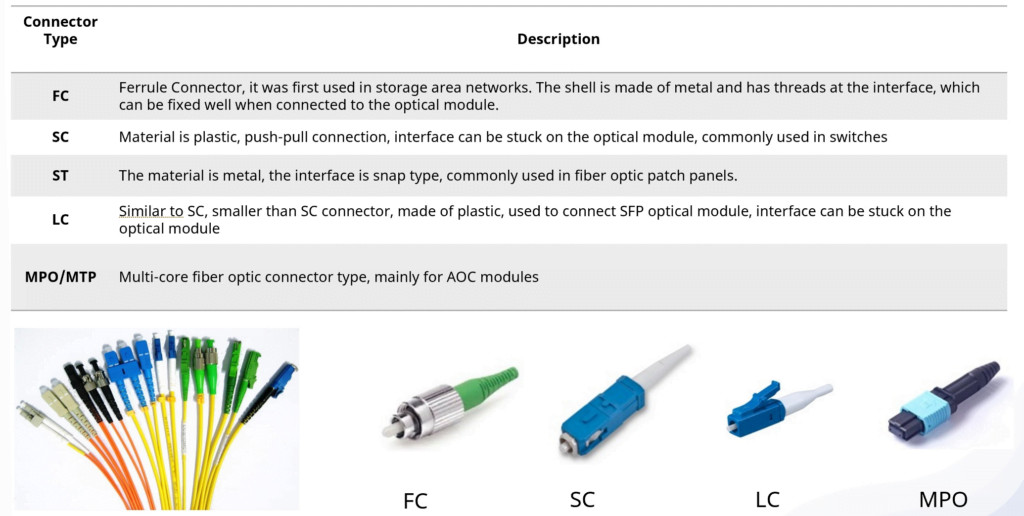
Deployment
During the deployment of multimode fiber, it is important to follow various best practices in order to achieve the desired network performance. Firstly, it is essential to properly mark and label the fiber throughout the installation process. This will facilitate future troubleshooting and maintenance efforts. Secondly, it is crucial to avoid sharp bends in the fiber, as they can result in signal loss and attenuation. Lastly, the use of high-quality splicing and termination materials is recommended to minimize signal loss and ensure proper connections.
Multimode optical fiber current status and future trends
Under the increasing demand for high-speed network applications, multi-mode optical fiber is evolving towards low loss, high bandwidth, and multi-wavelength multiplexing. With continuous advancements in optical fiber technology, the development of multi-mode optical fiber has progressed from the initial OM1 optical fiber to the current OM5 optical fiber that supports 40/100G networks, offering even better performance.
Presently, OM1 and OM2 optical fibers have gradually phased out from the market as they fail to adequately support high-speed communications or are solely used for 1G Ethernet link connections in computer rooms. OM3 and OM4 multimode optical fibers have found their place in 10G/40G data center applications, while OM5 multimode optical fiber is particularly suited for 40/100G high-speed Ethernet link transmission. Although OM5 optical fiber is well-equipped to support SWDM (short-wavelength division multiplexing), the more economical MPO/MTP solution (a multi-core connection interface) is preferred over SWDM solution for high-speed optical modules. Therefore, OM3 and OM4 multimode optical fibers remain the most commonly used options. For new cabling in data centers, it is recommended to use OM4 fiber, unless the interconnection between devices requires high speed and cost efficiency is not a concern. In such cases, OM5 fiber can also be considered. Compared to OM1/OM2/OM3/OM4 multi-mode optical fibers, OM5 multi-mode optical fiber showcases higher scalability and flexibility, supporting higher-speed network transmission with fewer cores, while also offering reduced cost and power consumption compared to single-mode fiber. It is apparent that OM5 multi-mode optical fiber has the potential to be broadly utilized in future 100G/400G/1T ultra-large data centers.
Moving forward, fiber-optic technology will continue to evolve to meet the demand for higher bandwidth, greater capacity, and longer transmission distances. The future development direction of optical fiber technology will integrate wavelength division multiplexing, the application of new materials, and the combination with other emerging technologies. Within this realm of continuous innovation, we anticipate witnessing further technological breakthroughs and application innovations that will propel optical communications to new heights.
Related products
Reference:
